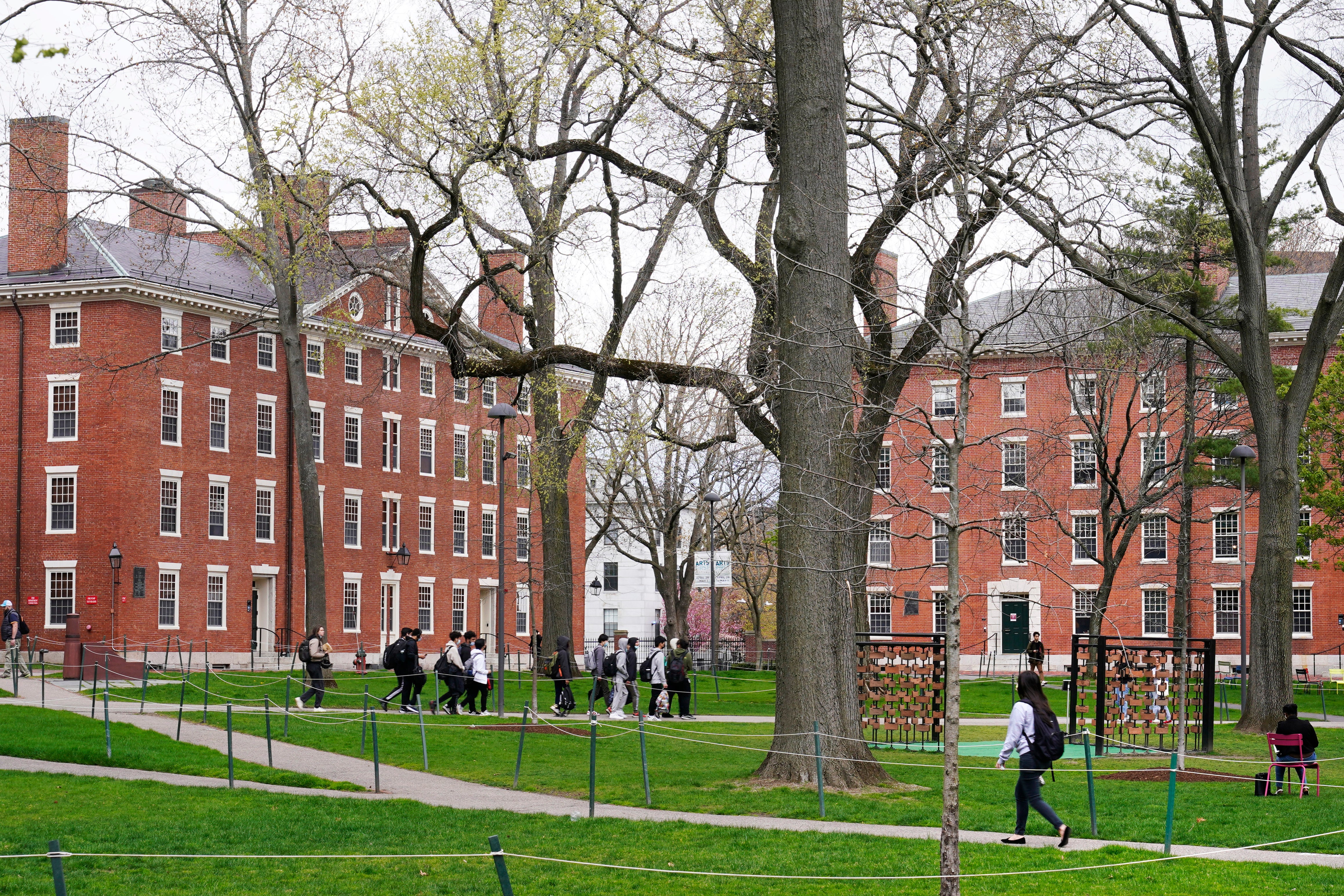LOCALIZE IT: Supreme Court strikes down affirmative action in college admissions

EDITORS/NEWS DIRECTORS:
The Supreme Court ruled Thursday that colleges and universities can no longer consider race in admissions, a decision that overturns 45 years of precedent. It stems from lawsuits at Harvard and the University of North Carolina, but the consequences will reach across the country.
The ruling will force colleges to look for new ways to achieve a diverse student body. Many are expected to place greater emphasis on family wealth or income. Some are bracing for big decreases in enrollment of Black and Hispanic students.
It’s seen as a victory for opponents of affirmative action who say race should have no place in college admissions. Many colleges see it as a defeat that could reverse decades of progress toward racial diversity.
Here are some tips for localizing the story:
___
FIND AP’S COVERAGE HERE
Supreme Court strikes down affirmative action in college admissions, says race cannot be a factor
As Supreme Court considers affirmative action, colleges see few other ways to diversity goals
In affirmative action and student loan cases, advocates fear losses for racial equality
___
ADD LOCAL CONTEXT
As you explore how this will play out locally, keep in mind that highly selective colleges are the most likely to consider race in admissions, but some big public universities and other less-selective institutions also consider race to varying degrees. There’s no database showing which schools use the practice, but you can ask colleges in your area. Many schools look at applicants’ race in some fashion.
Nine states have previously banned affirmative action for public universities: Arizona, California, Florida, Idaho, Michigan, Nebraska, New Hampshire, Oklahoma and Washington. Selective public universities in these states have been examined closely for signs of how an end to affirmative action could affect campus diversity in other states. Private colleges in these nine states generally can consider race.
___
TALK TO STUDENTS
Students entering their senior year of high school this fall will be applying for college at a time of dramatic change in admissions. Does the court’s decision change their application strategy? Does it change which colleges they will be applying to?
The decision has implications for students of all races, but it could have an outsize impact on students of color. How does it change the equation for them? What does it mean to have part of their identity removed from the process? One criticism of focusing on income instead of race is that it does little to help middle class students of color. How do students across different income levels feel about the decision?
Member groups of the National College Attainment Network can be a great resource for finding high school seniors.
College counselors can also help. Check the directory of the Independent Education Consultants Association for consultants in your area. Most states also have an association of school counselors, who can help find students.
___
TAKE YOUR REPORTING FURTHER
— The lawsuits at Harvard and UNC alleged racial discrimination against Asian Americans applicants, and the issue has divided Asian American communities. How do local Asian American families view the decision? Do students think the change will help or hurt their chances at getting into highly selective colleges?
— Ask colleges how they consider race and which practices they will need to stop. In recent months, colleges have been taking inventory of practices that could come into conflict with a ban on affirmative action. Ask how race factored into individual admission decisions and also whether other practices are in jeopardy, including scholarships or campus housing reserved for minority students.
— Look at the racial make-up of local colleges. What percent of the student body is Black, Hispanic or Native American — groups that historically have been underrepresented — and how does that compare with high school graduates across the state and nation? Do colleges’ students reflect the communities they draw from? Are there imbalances, and how have they changed over the last decade? Most colleges publish yearly enrollment data detailing racial demographics. Data can also be pulled from the U.S. Education Department’s IPEDS system. State education departments often have reports showing the racial breakdown of high school grads.
— Ask colleges what impact they expect to see. Some selective colleges predict that banning affirmative action will reverse decades of progress on diversity. The experience of states that have banned affirmative action offers some insight on what to expect: Regional and less selective colleges have typically fared better, although many saw initial decreases among Black and Hispanic students. At the same time, there are predictions that Historically Black Colleges and Universities could see surging interest.
— What will your local colleges do to achieve racial diversity? Will they put more emphasis on recruiting low-income students? Will they focus recruiting in areas with high minority populations? Will they create new scholarships or target financial aid toward diverse communities? Will they end legacy preferences or early admission practices?
___
Localize It is an occasional feature produced by The Associated Press for its customers’ use. Questions can be directed to Katie Oyan at koyan@ap.org.
Subscribe to Independent Premium to bookmark this article
Want to bookmark your favourite articles and stories to read or reference later? Start your Independent Premium subscription today.
